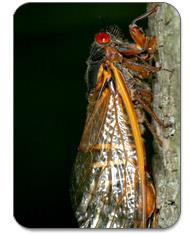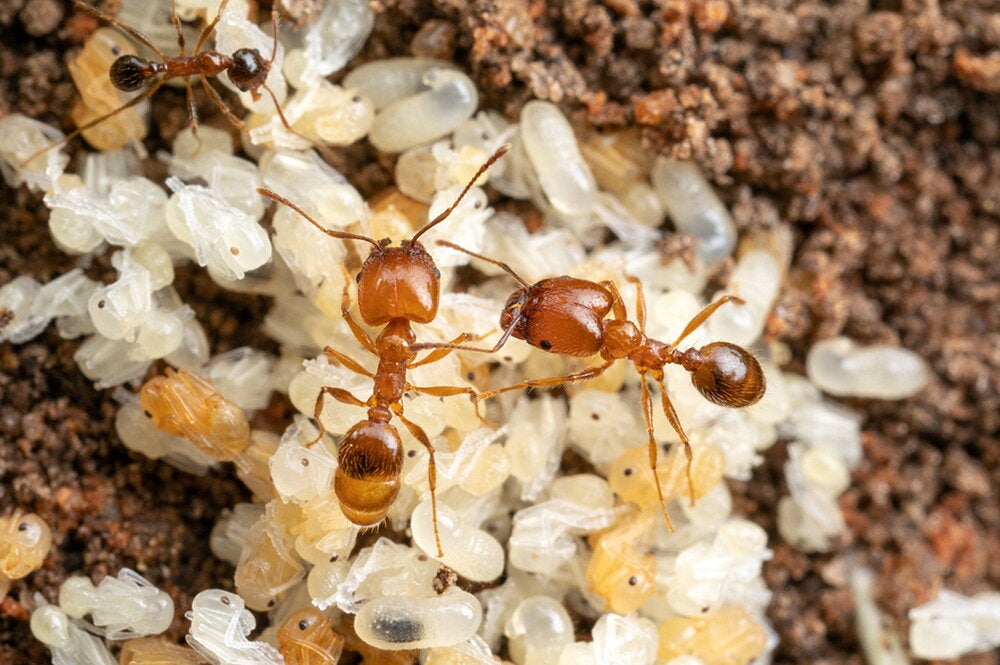

For those who think that life changes much too quickly, consider the intrepid cicada. In fact, at this time of year it would be hard to ignore it. This 100 percent green-blooded American insect has survived glaciers, predators, farms, and subdivisions. The periodic appearance of the cicada is a resourceful piece of the American experience, writ very slow, 17 years to be exact.
Currently, the eastern half of the United States is in the vortex of an unavoidable natural phenomenon: the synchronous emergence of millions of these noisy creatures from their underground lairs where they have lived since hatching on a tree limb, some for nearly two decades.
And although most of Illinois has been spared this year's cacophony—courtesy of Brood X—LAS professor of entomology and plant biology May R. Berenbaum, says it's a perfect time to ponder this miracle of sight and sound.
"Because these 13- or 17-year cycles run synchronously in different locations within 10 to 14 days of each other, literally millions of individuals of a given population, or brood, tunnel up and shed their last nymphal skin, after which they must hang from a vertical perch for at least an hour while their exoskeleton hardens.
"They then celebrate adulthood by singing to attract a mate, in the case of the males, or laying from 400 to 600 eggs, in the case of the females. The simultaneous song stylings of millions of males can reach 80 to 90 decibels, equivalent to the noise level of a subway station. If they can avoid predators, fungal infections and automobile grilles, they can live active adult lives that are two to six weeks long."
Berenbaum says although there are about 1,500 species of cicadas in the world, all largish insects with clear wings that feed on the dilute sap of plant roots and make buzzing sounds by vibrating their abdomens, only seven American species can lay claim to having the longest juvenile developmental period of any insect—depending on the species, from egg to adult in either 13 or 17 years.
"The cycles themselves have been subject to endless theorizing and speculation; the predominant theory is that, because their life span is long, and a prime number to boot, it's difficult for enemies to track their populations through time. A prime number is divisible only by one and itself. If cicadas, for example, emerged every 12 years (not a prime number), then they would more likely overlap with enemies on two-, three-, four- and six-year life cycles.
"Why only American cicadas hit upon the longevity ploy is a more difficult question to answer. North American geological history may have played a role. Periodical cicadas are thought to have evolved almost 2 million years ago, when cycles of glaciation repeatedly and unpredictably left eastern North America alternately warm and cold. Remaining underground for a long time apparently served as a good way for cicadas to avoid emerging during a randomly cold spring - a bad thing for a cold-blooded creature. With a 17-year cycle, the cicadas statistically avoid the vast majority of killer spring seasons."
Human overdevelopment is a potential enemy, but such lamenting fails to take into consideration cicada-style American resourcefulness, Berenbaum notes.. "Cicadas depend on trees to hang from, it's true, and while creating farmland reduces trees, suburbanization has brought some trees back. Fertilized, irrigated and uncrowded, these trees are nutritionally superior as cicada fare. Suburbs also offer the additional vertical possibilities of house walls, lawn chairs and lamp posts. Cicadas have taken advantage of all of these developments. They also thrive at forest edges, where they can soak up the sun's warmth in early spring and have capitalized on one effect of urbanization: an increase in edge habitat."
Although some of the broods recognized in the 19th century have gone extinct (Brood XI, for example, once centered in the Connecticut River Valley, hasn't been sighted since 1954), others such as Brood X seem to have reached record proportions.
Berenbaum says overcrowding because of high population densities is now so severe in some cicada populations that there aren't enough parking spaces on vertical surfaces for adults to complete the process of molting.
Sounds familiar, doesn't it?


